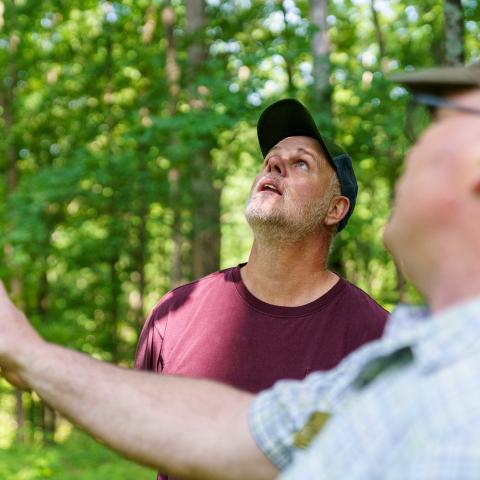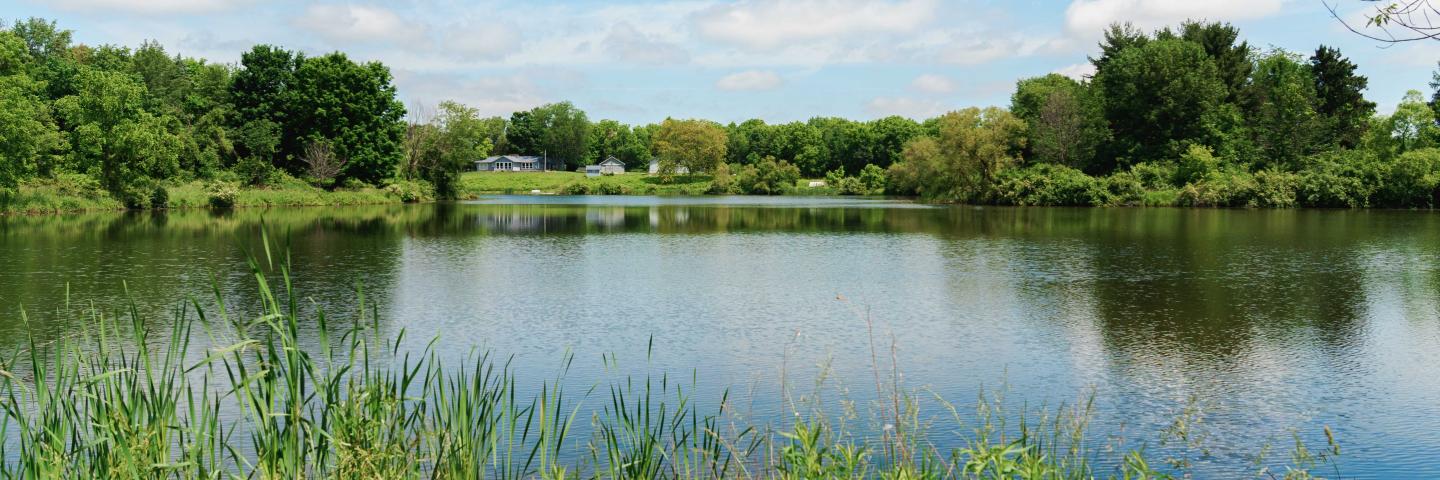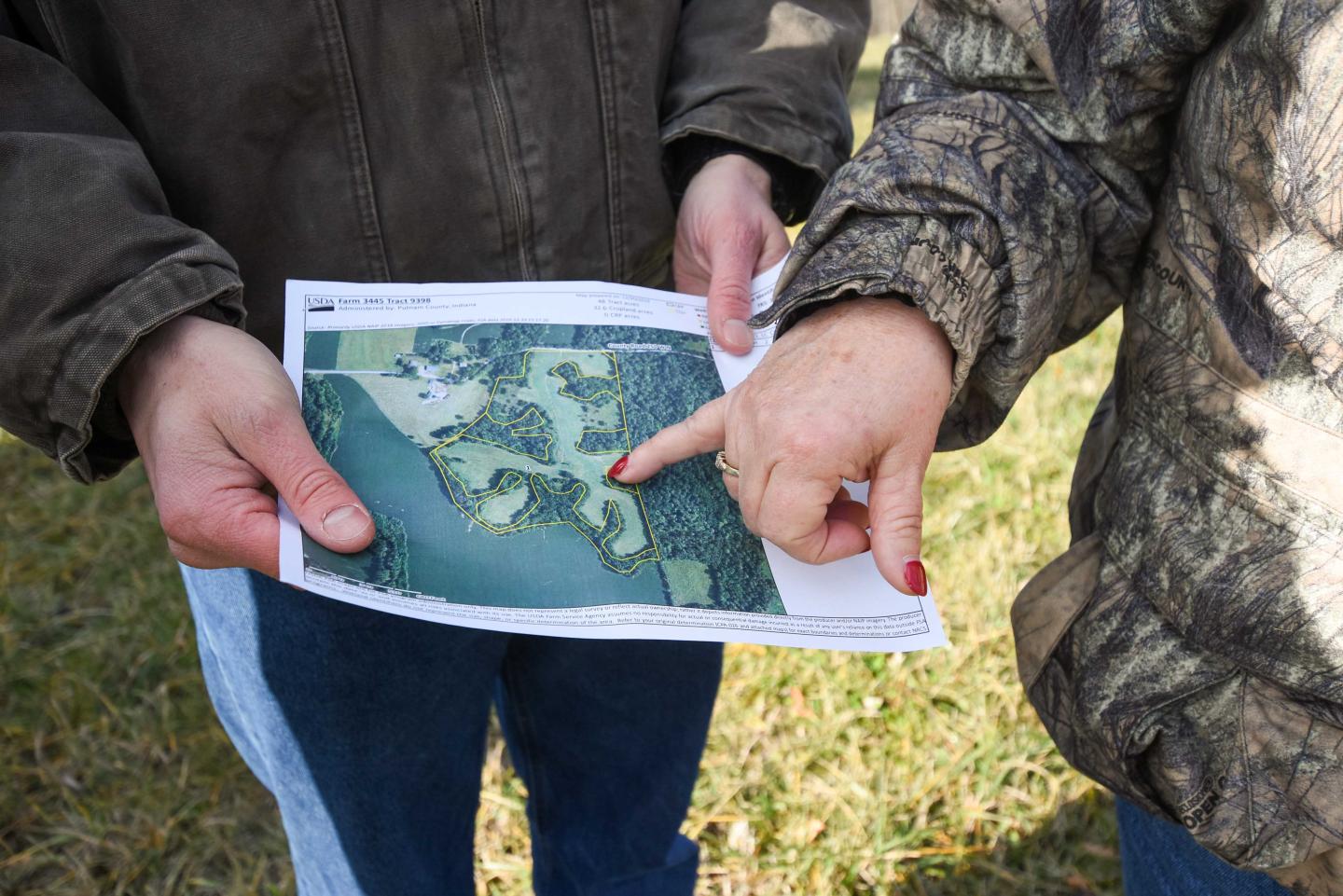
Press Release


The Conservation Stewardship Program (CSP) helps you build on your existing conservation efforts while strengthening your operation.
Have you ever looked across your farm or ranch and thought about elevating your land management goals? Maybe we can help.
Together we can develop a plan tailored to your operation and your goals to help you increase productivity and protect the value of your land. Participants earn CSP payments for conservation performance—the higher the performance, the higher the payment.
Our Conservation Stewardship Program (CSP) helps you build on your existing conservation efforts while strengthening your operation. Whether you are looking to improve grazing conditions, increase crop resiliency, or develop wildlife habitat, we can custom design a CSP plan to help you meet those goals. We can help you identify natural resource problems in your operation and provide technical and financial assistance to solve those problems or attain higher stewardship levels in an environmentally beneficial and cost-effective manner. For example, we can look at ways to address the amount of soil lost; mitigate the impact of excess water; reduce the contribution of agricultural operations to airborne soil particles and greenhouse gas emissions; improve the cover, food, and water available for domestic and wildlife species; or promote energy efficiencies for on-farm activities. If you are already taking steps to improve the condition of the land, chances are CSP can help you find new ways to meet your goals.
CSP is for working lands. It is the largest conservation program in the United States. Thousands of people voluntarily enroll in the program because it helps them enhance natural resources and improve their business operation.
CSP participants are seeing real results. Some of these benefits include:
Through CSP, we can help build your business while implementing conservation practices that help ensure the sustainability of your entire operation. Good land stewardship not only conserves the natural resources on your farm, ranch or forest, it also provides multiple benefits to local communities, including better water and air quality and wildlife habitat, as well as food and fiber.

Is the Conservation Stewardship Program right for your operation? Find out more about CSP and utilize the included check list to determine whether CSP is right for your operation.
Applicants may include individuals, legal entities, joint operations, or Indian tribes that meet the stewardship threshold for at least two priority resource concerns when they apply. Producers must have effective control of the land for the term of the proposed contract. Additionally, farm records must be established or updated with the Farm Service Agency for both the applicants and the land for your application to be eligible and evaluated. Farm records must indicate the applicant:
Eligible land includes:
Eligible producers and forest managers include:
CSP contracts are for five years, with the potential to renew for another five-year period if you successfully complete your first contract term, and if your renewal application ranks high enough (CSP renewals are a competitive process).
There are three types of payments available through CSP:
1. Annual contract payments which are based on two components:
2. Supplemental payments for producers willing to implement a resource conserving crop rotation, improve an existing resource conserving crop rotation, or implement advanced grazing management
3. Minimum contract payments for most contracts.
NRCS makes payments as soon as practical after October 1 of each fiscal year for contract activities installed and maintained in the previous fiscal year and completed before September 30
Once NRCS completes an assessment of your operation and you choose the conservation practices or activities that you want to implement, NRCS will rank your application to determine how well your current and future management system will address national, state, and local natural resource priorities.
NRCS will rank your application against other similar eligible applications in the same ranking pool, with the highest scoring applications receiving contract offers first.
CSP applicants must currently be meeting the stewardship threshold for at least two priority natural resource concerns on every land use included in the operation. They must also agree to meet or exceed the stewardship threshold for at least one additional resource concern by the end of the contract on at least one land use.
Stewardship threshold is a term NRCS uses to determine if a CSP applicant is currently meeting or exceeding an adequate level of conservation criteria for a particular natural resource concern. Don’t worry if you are unsure of your threshold because an NRCS planner will assist you.
Special provisions are available for historically underserved producers, which include those considered beginning, socially disadvantaged and limited resource as well as military veterans.
This new initiative assists producers in protecting grazing land uses; conserving and improving soil, water and wildlife resources; and achieving related conservation values by conserving eligible land through grassland conservation contracts. Eligible lands are limited to cropland for which base acres have been maintained under FSA’s ARC/PLC and were planted to grass or pasture, including idle or fallow, during a specific period. Enrolled acreage must be managed consistently with a grassland conservation plan. Producers will have a single opportunity to enroll eligible land in a five-year contract.
Several NRCS conservation programs directly support climate-smart agriculture and forestry, including CSP. Learn more about NRCS Climate-Smart Conservation Activities or download the NRCS Fiscal Year 2022 Climate-Smart Agriculture and Forestry Mitigation Activity List to see the full list of mitigation activities.
NRCS directive 530.37 ACT NOW allows NRCS to immediately approve and obligate a ranked application in a designated ranking pool when an eligible application meets or exceeds a State determined minimum ranking score without waiting until the NRCS field office ranks all applications in the ranking pool.
Whether your farm thousands of acres or just a few, raise livestock or own private forestland, CSP has enhancements that can help you take your conservation practices to the next level.
NRCS provides financial assistance for selected conservation practices. The availability and amount of financial assistance can vary between states. Download the Indiana payment schedules from the link below to see which activities qualify, and how much financial assistance is available.
The 2018 Farm Bill was enacted on December 20, 2018. The Farm Bill continues its strong support for conservation efforts of America’s farmers and ranchers through reauthorization and expanded flexibility of NRCS conservation programs.
Historically Underserved producers may be eligible for the advance payment option as well as targeted funding pools and priority consideration when applying for assistance.
For more information about NRCS programs offered in Indiana and how experts throughout the state can help you address natural resource concerns on your land, visit the Indiana NRCS homepage.
Contact your local service center to start your application.
Do you farm or ranch and want to make improvements to the land that you own or lease?
Natural Resources Conservation Service offers technical and financial assistance to help farmers, ranchers and forest landowners.

To get started with NRCS, we recommend you stop by your local NRCS field office. We’ll discuss your vision for your land.
NRCS provides landowners with free technical assistance, or advice, for their land. Common technical assistance includes: resource assessment, practice design and resource monitoring. Your conservation planner will help you determine if financial assistance is right for you.
We’ll walk you through the application process. To get started on applying for financial assistance, we’ll work with you:
Once complete, we’ll work with you on the application, or CPA 1200.
Applications for most programs are accepted on a continuous basis, but they’re considered for funding in different ranking periods. Be sure to ask your local NRCS district conservationist about the deadline for the ranking period to ensure you turn in your application in time.
As part of the application process, we’ll check to see if you are eligible. To do this, you’ll need to bring:
If you don’t have a farm number, you can get one from USDA’s Farm Service Agency. Typically, the local FSA office is located in the same building as the local NRCS office. You only need a farm number if you’re interested in financial assistance.
NRCS will take a look at the applications and rank them according to local resource concerns, the amount of conservation benefits the work will provide and the needs of applicants. View Application Ranking Dates by State.
If you’re selected, you can choose whether to sign the contract for the work to be done.
Once you sign the contract, you’ll be provided standards and specifications for completing the practice or practices, and then you will have a specified amount of time to implement. Once the work is implemented and inspected, you’ll be paid the rate of compensation for the work if it meets NRCS standards and specifications.